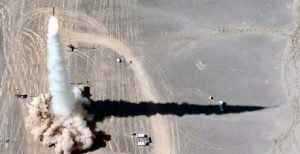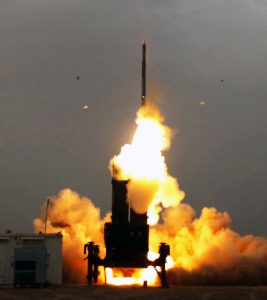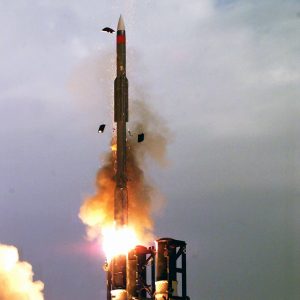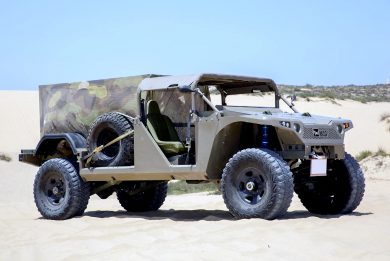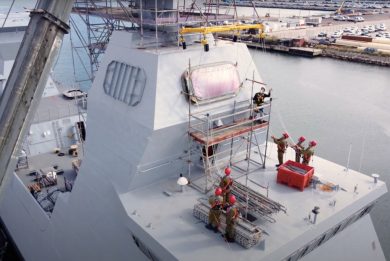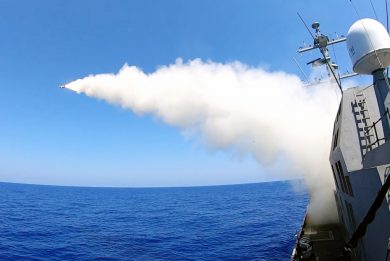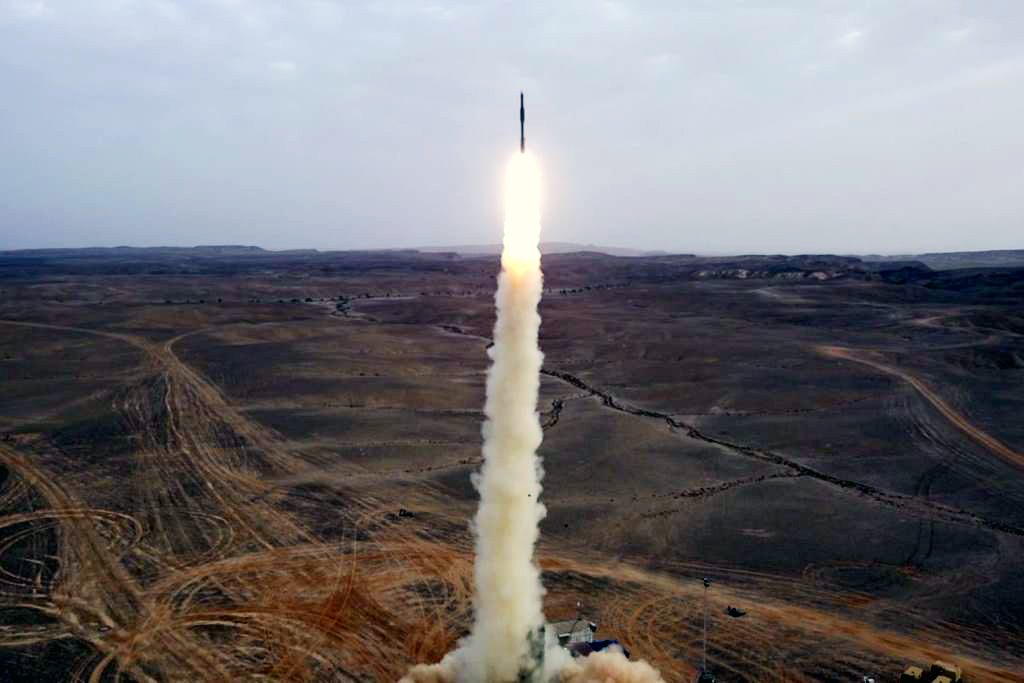
Successful production Barak ER intercept brings IAI’s system into the ABM world
By Paolo Valpolini
The successful intercept of a ballistic missile threat concluded the qualification phase of the Barak ER (Extended Range) missile, the last born of the Barak interceptors family, the IAI (Israel Aerospace Industries) system scope being widened from air defence to ballistic missile defence. “The missile used was the first one that came out from the production line,” Boaz Levy, IAI President and CEO specified during a web press conference. A first press release on Barak ER testing was issued by IAI on March 22nd.
The Barak MX system, with the previously developed interceptors, is in service in Israel and some other countries, Azerbaijan being definitely one, as well as in India with the three services. Two missiles were available until now, the MRAD (for Medium Range Air Defence), with a single solid fuel pulse rocket motor and a 35 km range, and the LRAD, reaching 70 km, with a dual/solid fuel pulse rocket motor. The MRAD has a maximum intercept altitude of 10 km, the LRAD reaching 20 km, both missiles being 4.5 meters long, with a 0.227 meters diameter, and carrying a 23 kg blast/fragmentation warhead. The difference in the propulsion system leads to a slight difference weight at launch, 255 versus 280 kg, while the inertial/GPS navigation system is identical, the same for the active radar terminal guidance, the missile being also data linked to the command post, the main sensor is the IAI/Elta MMR (Multi Mission Radar) radar. The Barak MX being available in land and naval configurations. The Israeli-made system has obtained a considerable success: “until now we have sold over 1,000 missiles, and we have about 7 billion USD in contracts,” Boaz Levy said.
With the availability of the new Barak ER, tactical ballistic missiles join the numerous target types mentioned by IAI CEO as potential victims of the system, which include fighters and other aircraft, cruise and sea-skimming missiles, helicopters, UAVs and gliding bombs. “We cover 360° thanks to our vertical launch approach, can provide all-weather point and area coverage as well as cooperative defence, and we provide high performance against saturation attacks,” he underlined.
He also explained how the Barak goes beyond the typical battery configuration, usually made of a radar, a command post and a number of launchers, and re-loading and maintenance vehicles. “First of all we can connect several batteries on the same net, exploiting the sensor of one battery while shooting the missile of another one, but we can also synchronise sea-based and land-based assets, and we can also exploits other sensors, such as radars, airborne early warning aircraft, satellites and others, providing a situation picture tailored to the user’s need in terms of air and missile defence,” Mr. Boaz states. Of course full synchronisation with friendly forces is also feasible, allowing zeroing blue-on-blue risks.
Adding the new Barak ER, with its 150 km range, 25 km altitude of intercept, and much higher speed, gives considerable flexibility to the overall system, allowing tailoring the engagement to the type of threat. The new interceptor is the result of the combination of a standard Barak LRAD missile with a solid rocket propellant booster, which increases the length to 5.8 meters and the diameter to 0.35 meters, weight at launch being 400 kg. The warhead has also been changed, and while it remains of the blast fragmentation type, it was stated that its lethality is higher, its weight remaining however classified. The ER seeker was also upgraded with new algorithms, to allow it dealing with the ballistic missile threat. The booster plus the dual-impulse rocket motor allow the Barak ER to reach a much higher speed, no figures were given, providing a high manoeuvrability in the vicinity of the target thanks to the second impulse. The missile canister maintains the same section, the booster diameter falls within the canister size, however it is obviously longer to accommodate the new missile which booster adds 1.3 meters to the original length. The Barak ER canister remains fully compatible with the land launcher, while on ships it will eventually protrude from the deck, while new designed ships might take in count the extra length allowing for flush deck solutions.
Coming to the latest tests, Boaz Levy said that the interception took place at 10 km altitude, following the typical sequence that saw the missile climbing vertically under the booster thrust, which separated while the missile itself, under the thrust of its rocket motor, aimed towards the interception point calculated by the C2 system considering the trajectory provided by the radar. The seeker was activated, and then locked onto the target, and close to the interception point the second pulse ignition provided the agility to get as close as possible to the incoming threat before detonating, this engagement being carried out with the actual warhead, “and in all our missions we found out we were very accurate,” IAI CEO commented. According to graphics shown during the presentation the missile was fired at some 40 km from the launcher and had quite a steep trajectory, the predicted impact point on the ground being at around 22 km from the launcher, test range constraints inevitably limiting ranges, interception taking place at approximately 26 km from the launcher, at 10 km altitude.
Asked on the number of batteries needed to defend the whole state of Israel, the IAI CEO answered that depending on battery configuration, using both Barak ER and LR interceptors, three to four batteries should be sufficient. As for integrating it within existing Israel defensive systems, he underlined that the Barak has higher capabilities if we consider those systems capable to play both in air defence and anti ballistic missile roles, its data link allowing easy integration with other national assets. No exact price was given for the interceptor, the only comment being that it is worth several “hundred thousands dollars.”
Coming to naval use, and more precisely to that on future Israeli Navy Sa’ar 6 corvettes, Boaz Levy stated that the radar is being now integrated onto the first of class, and will be followed by the launcher, and finally by electronic components. The four corvettes will all be fitted with the Barak; “the Israeli Navy is currently adopting for its new ships the Barak LRAD, with a 70 km range, but should they decide in the future to improve their capabilities by adopting the ER they will have to decide how to include the longer canisters, the radar and command and control elements remaining the same.” According to information available to EDR On-Line, each Sa’ar 6 will have two vertical launch systems located in the midship structure on port and starboard.
While of course no names were given concerning the customers who are awaiting for the new missiles, the fact that these were mentioned at plural shows well that at least one export customer has signed in for the new capability, giving for granted that Israel will be the first user.
All photos courtesy IAI

